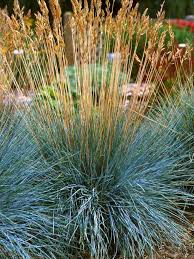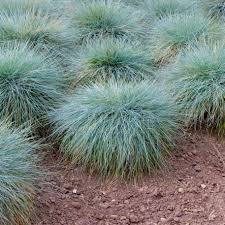Elijah Blue Grass is a type of grass that has a unique bluish color. This color sets it apart from other types of grass you might see in your yard or in fields. The bluish hue of Elijah Blue Grass is what makes it special and attractive to many people.
This type of grass is often used for ornamental purposes, which means it’s grown more for its looks than for practical uses like grazing animals. People like to plant Elijah Blue Grass in their gardens or landscapes to add a touch of cool blue to their surroundings.
One great thing about Elijah Blue Grass is that it’s relatively easy to take care of. It usually doesn’t require a lot of water, which can be a big advantage in areas where water is scarce. Plus, it’s a pretty low-maintenance plant, so you don’t need to spend too much time tending to it.
When planting Elijah Blue Grass, it’s important to choose a good spot with enough sunlight. Like all plants, it needs sunlight to grow and thrive. You’ll want to make sure the soil is well-drained too, so the grass doesn’t get waterlogged.
In addition, Elijah Blue Grass is a special kind of grass that stands out because of its bluish color. People like to use it for decoration in gardens and landscapes. It’s easy to take care of and can add a unique touch to your outdoor space. Just remember to plant it in a sunny spot with good soil drainage.
Read Also: How often you need to Change Water in your Fish Farm
Growing Elijah Blue Grass

Here’s a simple growing guide for Elijah Blue Grass:
1. Choosing the Right Location: Select a sunny spot in your garden or landscape for planting Elijah Blue Grass. It thrives in full sunlight, so make sure the chosen area receives at least 6-8 hours of direct sunlight each day.
2. Preparing the Soil: Ensure the soil is well-draining and not overly compacted. You can improve drainage by adding organic matter like compost to the soil. Elijah Blue Grass prefers slightly acidic to neutral soil pH.
3. Planting: Spring or early fall is the best time to plant Elijah Blue Grass. Dig a hole that’s about twice the width of the root ball of the plant. Place the grass in the hole, making sure it’s at the same level as the surrounding soil. Fill the hole with soil and gently pat it down.
4. Watering: Water the grass immediately after planting and keep the soil consistently moist for the first few weeks. Once the grass is established, it is more drought-tolerant and will require less frequent watering.
5. Fertilizing: Apply a balanced, slow-release fertilizer in the spring and again in late summer or early fall. Follow the package instructions for the appropriate amount to use.
6. Mowing: Elijah Blue Grass is a low-growing grass, so you won’t need to mow it as often as other types. When mowing, set the mower height to about 2-3 inches to maintain its appearance.
7. Pruning and Maintenance: Trim any dead or damaged leaves as needed to keep the grass looking tidy. You can also divide and transplant clumps every few years to prevent overcrowding.
8. Pest and Disease Control: Elijah Blue Grass is generally resistant to pests and diseases. However, keep an eye out for signs of common grass issues and treat them promptly if they arise.
9. Winter Care: In colder climates, Elijah Blue Grass may turn brown in the winter months. This is normal, and it will typically green up again in the spring. You can help protect the grass during winter by applying a layer of mulch around the base of the plants.
Remember, every garden is unique, so it’s a good idea to observe your Elijah Blue Grass regularly and adjust care practices as needed based on its specific conditions. Enjoy the beauty of your bluish grass and the tranquility it adds to your outdoor space.
Caring for Elijah Blue Grass
Here’s a care guide for maintaining your Elijah Blue Grass:
1. Watering: Keep the soil consistently moist after planting until the grass is established. Once established, water deeply but infrequently. Allow the top inch or two of soil to dry out before watering again. Aim to provide about 1 inch of water per week, either through rainfall or irrigation.
2. Sunlight: Ensure your Elijah Blue Grass receives plenty of sunlight. It thrives in full sun, which means it needs at least 6-8 hours of direct sunlight each day.
3. Soil: Plant Elijah Blue Grass in well-draining soil. If your soil is heavy or clay-like, consider adding compost to improve drainage and soil structure.
4. Fertilizing: Feed your grass in the spring and again in late summer or early fall with a balanced, slow-release fertilizer. Avoid over-fertilizing, as this can lead to excessive growth and weaken the grass.
5. Mowing: Maintain a mowing height of about 2-3 inches to keep your Elijah Blue Grass looking its best. Regular mowing will help prevent the grass from becoming too leggy and will encourage healthy growth.
6. Pruning: Trim away any dead or damaged leaves as needed. Pruning can help keep the grass looking neat and tidy.
7. Dividing and Transplanting: Every few years, consider dividing and transplanting clumps of Elijah Blue Grass to prevent overcrowding and rejuvenate the plant.
8. Mulching: Apply a layer of mulch around the base of the grass to help retain moisture, suppress weeds, and protect the roots from temperature fluctuations. Make sure the mulch is not too close to the crown of the grass.
9. Winter Care: In colder climates, Elijah Blue Grass may go dormant and turn brown in the winter. This is normal. You can leave the brown foliage in place as it can provide some protection to the roots. In early spring, you can gently rake away the dead leaves to make way for new growth.
10. Pest and Disease Control: While Elijah Blue Grass is generally resistant to pests and diseases, keep an eye out for any signs of problems. If you notice any issues, address them promptly using appropriate treatments.
11. Seasonal Considerations: Adjust your care routine based on the changing seasons. During periods of high heat or drought, you may need to increase watering. In colder months, reduce watering and protect the grass from extreme temperature fluctuations.
By following these care guidelines, you can enjoy the beauty of Elijah Blue Grass and maintain a healthy and vibrant outdoor space. Remember that every garden is unique, so observing your grass’s response to care practices will help you fine-tune your routine over time.
Elijah Blue Fescue Grass

Elijah Blue Fescue Grass is a special kind of grass that has a beautiful blue color. This blue color makes it different from other grasses you might see in yards or fields. People really like Elijah Blue Fescue because of its unique look.
This grass is often used for making gardens look pretty. People plant Elijah Blue Fescue in their gardens to add a touch of blue that stands out. It’s not used for things like animals eating it, but mostly for decoration.
Taking care of Elijah Blue Fescue is quite easy. You don’t need to water it a lot, which is great if water is hard to find where you live. You also don’t need to do a lot of work to keep it healthy.
When you plant Elijah Blue Fescue, it’s important to put it in a place where it can get sunlight. Just like how we need sunlight, plants do too. The soil should also be good for water to go through, so the grass doesn’t get too wet.
However, Elijah Blue Fescue Grass is special because of its blue color. People like to use it for making gardens look nice. It’s not hard to take care of and can make your outdoor space look unique. Remember to put it where it can get sunlight and use soil that lets water pass through.
Read Also: Recommended Volume of Water for Fish Farming on a Concrete Pond
Importance of Elijah Blue Fescue Grass
Here are three wonderful reasons why Elijah Blue Fescue Grass is important:
1. Distinctive Beauty: The unique blue color of Elijah Blue Fescue Grass sets it apart from other grasses. Its striking appearance adds a touch of elegance and charm to gardens, landscapes, and outdoor spaces. The distinct blue hue adds a refreshing and calming element that appeals to people’s senses and enhances the overall aesthetic appeal of an area.
2. Low-Maintenance Landscaping: Elijah Blue Fescue Grass is known for being easy to take care of. Its minimal water requirements make it a great choice for regions with limited water resources or for individuals looking to conserve water. Additionally, its low-maintenance nature means that people can enjoy its beauty without investing a lot of time and effort in its upkeep, making it a practical and sustainable landscaping option.
3. Texture and Contrast: Beyond its color, Elijah Blue Fescue Grass offers a unique texture that adds depth and contrast to landscaping designs. Its fine, tufted blades create interesting visual patterns and can be used as a border, ground cover, or accent plant. The grass’s distinct texture complements a variety of other plants and elements, making it a versatile choice for creating visually appealing outdoor arrangements.
In summary, Elijah Blue Fescue Grass holds wonderful importance due to its distinctive beauty, suitability for low-maintenance landscaping, and its ability to provide texture and contrast in garden designs. Whether as a focal point or a complementary element, this grass adds a touch of natural elegance to outdoor spaces while requiring minimal care.
Read Also: Waste Management Startups: The Future of Sustainable Waste Management
